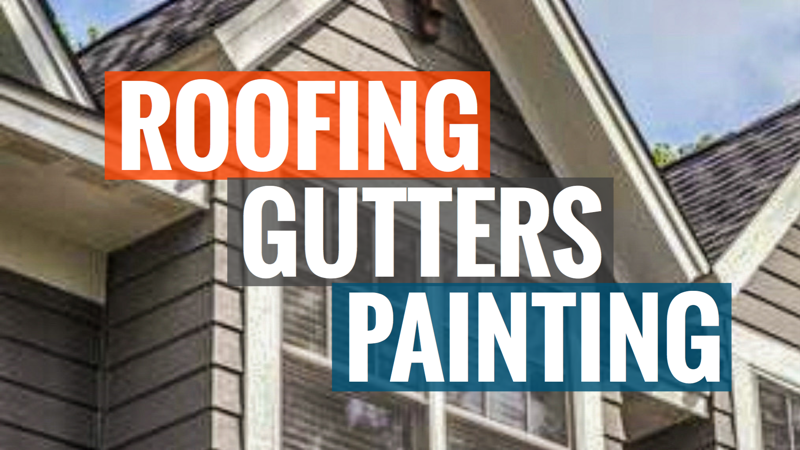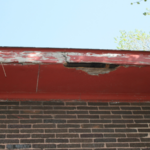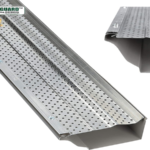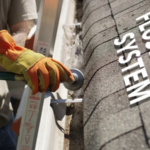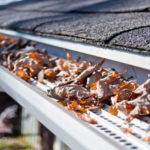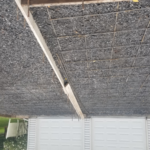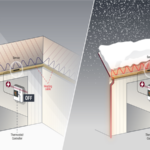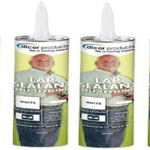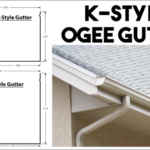If you’re a savvy homeowner, you know that one of the best ways to keep your home in top condition is to regularly maintain your gutters. But what if you’re not sure how to go about doing that? Or what if you’re not sure how much it will cost to have someone do it for you? In this article, we’ll give you the lowdown on rain gutter installation so that you can make the best decision for your home.
Rain gutters are an important part of your home’s exterior, and they play a vital role in protecting your home from water damage. When gutters become clogged with leaves and debris, they can no longer effectively funnel water away from your home, which can lead to serious problems like water damage to your foundation or landscaping. That’s why it’s so important to keep your gutters clean and in good working condition.
There are two main options for rain gutter installation: hiring a professional to do it for you, or doing it yourself. If you’re handy and have some experience with home improvement projects, you may be able to handle the installation yourself. However, if you’re not confident in your abilities, or if you don’t have the time to do it yourself, hiring a professional is always the best option.
What do I need to know about installing gutters?
Your home’s gutters are one of the most important parts of your house when it comes to keeping it in good condition and protecting it from the elements. Gutters channel water away from your roof and walls, preventing water damage, and they also help to keep your foundation in good condition by redirecting water away from it.
If you’re thinking about installing gutters on your home, there are a few things you should know. First, you’ll need to decide what type of gutters you want. There are two main types of gutters: sectional and seamless. Sectional gutters are made in sections that are connected together, while seamless gutters are made from one continuous piece of material.
Seamless gutters are generally considered to be the better option because they’re less likely to leak, and they’re also more aesthetically pleasing because there are no seams visible. However, they can be more expensive to install.
Once you’ve decided on the type of gutters you want, you’ll need to choose a material. The most common materials used for gutters are aluminum and vinyl. Aluminum is the more popular choice because it’s durable and low-maintenance, but it can be more expensive than vinyl.
What is the rule of thumb for gutters?
There is no definitive answer to this question as the amount of gutters needed for a given property depends on a number of factors, such as the size and shape of the roof, the amount of rainfall the area receives, and the number of trees nearby. However, a good rule of thumb is to have one gutter for every 30 feet of roofline.
How much should I drop when installing gutters?
When it comes to installing gutters, there is no definitive answer as to how much you should drop. This will largely depend on the specific situation and the slope of your roof. However, as a general rule of thumb, you should drop the gutters at least 2-3 inches for every 10 feet of run. This will ensure that the gutters are properly installed and will not leak.
Is it cheaper to install your own gutters?
No, it is not necessarily cheaper to install your own gutters. The cost of materials and the tools required can be expensive, and the process is time-consuming. If you are not experienced in this type of work, it is easy to make mistakes that can be costly to fix. Hiring a professional to install your gutters will ensure the job is done right and can save you money in the long run.
Do gutters have to go under drip edge?
No, gutters do not have to go under drip edge. While some people believe that gutters should be installed under drip edge in order to keep water away from the home’s foundation, this is not the case. In fact, installing gutters under drip edge can actually cause more problems than it solves.
One of the main reasons why gutters should not be installed under drip edge is because it can cause the gutters to become clogged more easily. When gutters are installed under drip edge, leaves and other debris can fall into the gutters and cause them to become clogged. This can lead to water overflowing from the gutters and onto the home’s foundation, which can cause serious damage.
Another reason why gutters should not be installed under drip edge is because it can make it more difficult to clean the gutters. When gutters are installed under drip edge, they are more difficult to reach and clean. This can make it more likely that the gutters will become clogged and will need to be replaced more often.
If you are considering installing gutters on your home, it is best to install them above the drip edge. This will ensure that they are less likely to become clogged and will be easier to keep clean.
Can I install gutters myself?
It’s possible to install gutters yourself, but it’s not recommended. Gutters are an important part of your home’s drainage system, and if they’re not installed properly, they can cause serious problems. Hiring a professional to install gutters is the best way to ensure that they’ll be installed correctly.
How hard is it to install gutters yourself?
It is not hard to install gutters yourself. However, it is important to follow the instructions carefully and to take your time. If you do not have experience with home improvement projects, it might be a good idea to hire a professional to help you.
Should there be a gap between roof and gutter?
There are a few reasons for why there should be a gap between the roof and the gutter. The first reason is that it allows for water to run off of the roof and into the gutters. If there was no gap, the water would run down the sides of the house and potentially cause damage. The second reason is that it allows for air to circulate around the gutters and helps to prevent them from getting too hot in the summer sun. The third reason is that it provides a space for animals to nest in and helps to keep them out of the gutters. All of these reasons make a strong case for why there should be a gap between the roof and the gutter.
Bottom Line
If you’re considering having rain gutters installed on your home, there are a few things you should know in order to get the best deal possible. First, make sure you get multiple quotes from different contractors. Second, ask each contractor about any discounts they may offer. Finally, be sure to get a written estimate that includes all materials and labor costs. By following these tips, you can be sure you’re getting the best possible deal on rain gutter installation.
